Discover 15 hidden attractions, cool sights, and unusual things to do in Kanazawa (Japan). Don't miss out on these must-see attractions: Kenroku-en, 21st Century Museum of Contemporary Art, and Kanazawa Castle. Also, be sure to include Seisonkaku in your itinerary.
Below, you can find the list of the most amazing places you should visit in Kanazawa (Ishikawa).
Table of Contents
Kenroku-en
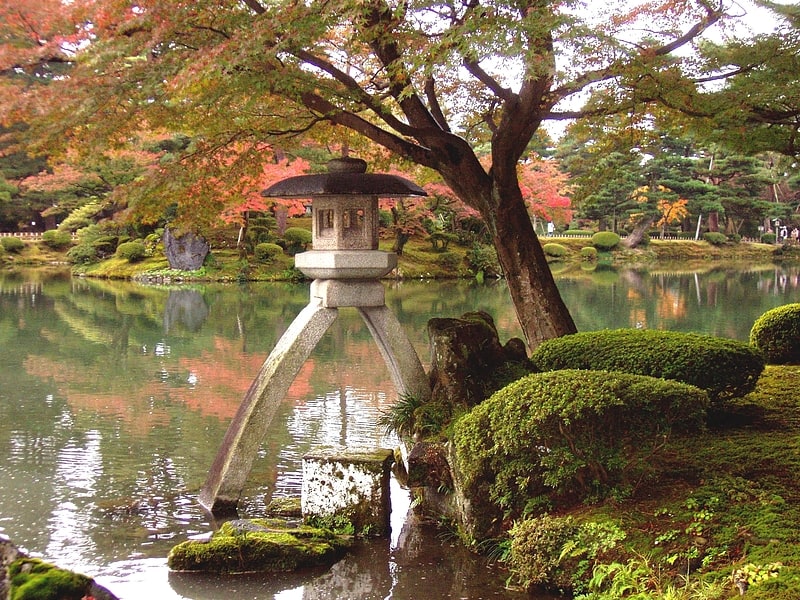
Also known as: 兼六園
Garden embodying the Japanese style. Kenroku-en, located in Kanazawa, Ishikawa, Japan, is an old private garden. Along with Kairaku-en and Kōraku-en, Kenroku-en is one of the Three Great Gardens of Japan. The grounds are open year-round except for December 29 through January 3 during daylight hours and famous for its beauty in all seasons; an admission fee is charged.[1]
Address: 1 Kenrokumachi, Kanazawa, 920-0936 Kanazawa
21st Century Museum of Contemporary Art
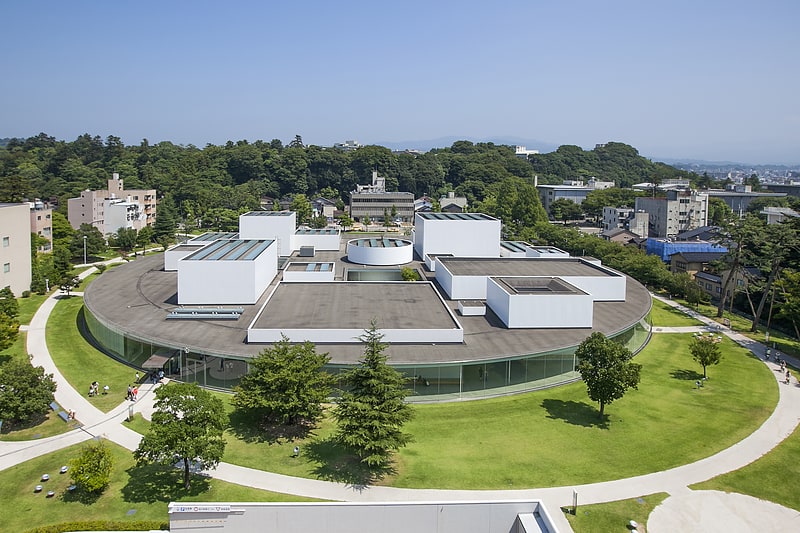
Also known as: 金沢21世紀美術館
Sleek showcase for contemporary art. The 21st Century Museum of Contemporary Art, Kanazawa is a museum of contemporary art located in Kanazawa, Ishikawa, Japan. The museum was designed by Japanese architects Kazuyo Sejima and Ryue Nishizawa of the architectural office SANAA in 2004. In October 2005, one year after its opening, the Museum marked 1,570,000 visitors. In 2020, due to the COVID-19 pandemic it attracted only 971,256 visitors, a drop of 63 percent from 2019, but it still ranked tenth on the list of most-visited art museums in the world.[2]
Address: 1-2-1 Hirosaka, 920-8509 Kanazawa
Kanazawa Castle
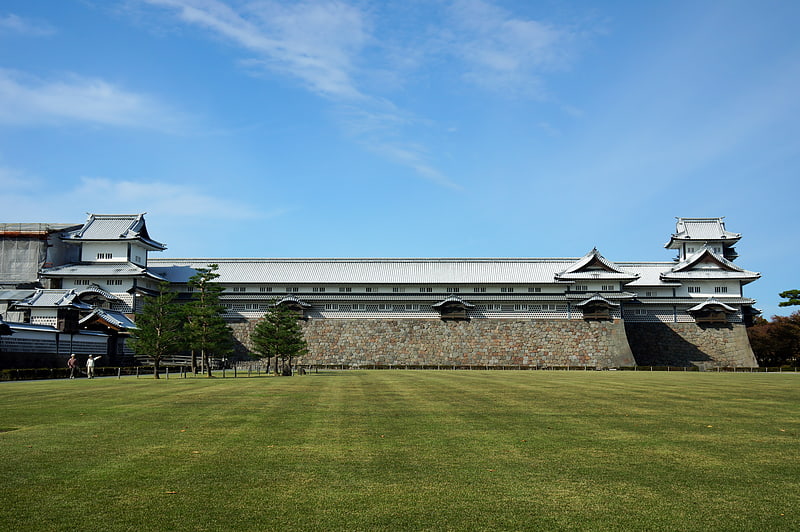
Also known as: 金沢城
Historic castle with lush grounds. Kanazawa Castle is a large, partially-restored Japanese castle in Kanazawa, Ishikawa Prefecture, Japan. It is located adjacent to the celebrated Kenroku-en Garden, which once formed the castle's private outer garden. It was the headquarters of Kaga Domain, ruled by the Maeda clan for 14 generations from the Sengoku period until the coming of the Meiji Restoration in 1871.[3]
Address: 1-1 Marunouchi, 920-0937 Kanazawa
Seisonkaku
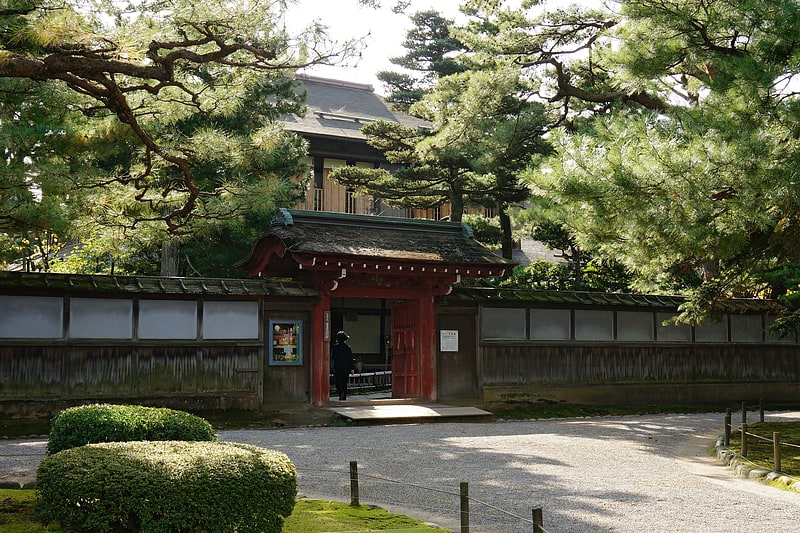
Also known as: 成巽閣
Historical landmark in Kanazawa, Japan. The Seisonkaku is a large Japanese villa in the city of Kanazawa, built in 1863 by Maeda Nariyasu, 13th daimyō of the Kaga clan, as a retirement home for his mother Shinryu-in. A collection of her personal effects is open to the public.
It is one of the few buildings in Japan to display the possessions of a daimyo family in their original surroundings. The main floor is built in the buke-shoin (武家書院) style, with a formal guest chamber Ekken-no-ma (謁見の間), and a traditional covered walkway (engawa (縁側)) which opens onto a beautiful small garden. The walkway, named Horsetail corridor (つくしの廊下), is famous for being 20 meters long, with no supporting beams holding up the roof. The roof is supported with a cantilever that extends 10 meters back into the building, a Meiji-period architectural innovation. The first floor showcases extensive architectural uses of artwork, from painted screens and doors to stained glass imported from the Netherlands.
The second floor of the building is decorated in strong reds, blues and purples in the sukiya-shoin (数奇屋風書院) style. Some of the shōji screens on the second floor feature glass panes imported from the Netherlands, allowing snow viewing in wintertime without opening the screens.[4]
Address: 1-2 Kenroku-machi, 920-0936 Kanazawa
Oyama Shrine

Also known as: 尾山神社
Shinto shrine with a big garden and pond. Oyama Shrine is a Shinto shrine in Kanazawa, Ishikawa, Japan.
The shrine was established in 1599, dedicated to Maeda Toshiie (the first lord of Kaga Domain), in Utatsu-yama (卯辰山), east of Kanazawa. It was moved to its present location in 1873 and renamed to Oyama-jinja. The main gate was constructed in 1875. This gate is a peculiar mix of traditional Japanese, Chinese, and European religious architectural elements. The gate is 25 metres (82 ft) high including the lightning rod. The third floor is particular famous for its Dutch stained-glass windows. It is said that the third floor was also used as a lighthouse. The gate was designated an Important Cultural Asset on August 29, 1950.[5]
Address: 11-1 Oyama-machi, 920-0918 Kanazawa
Ishikawa Prefectural Museum of Traditional Arts and Crafts
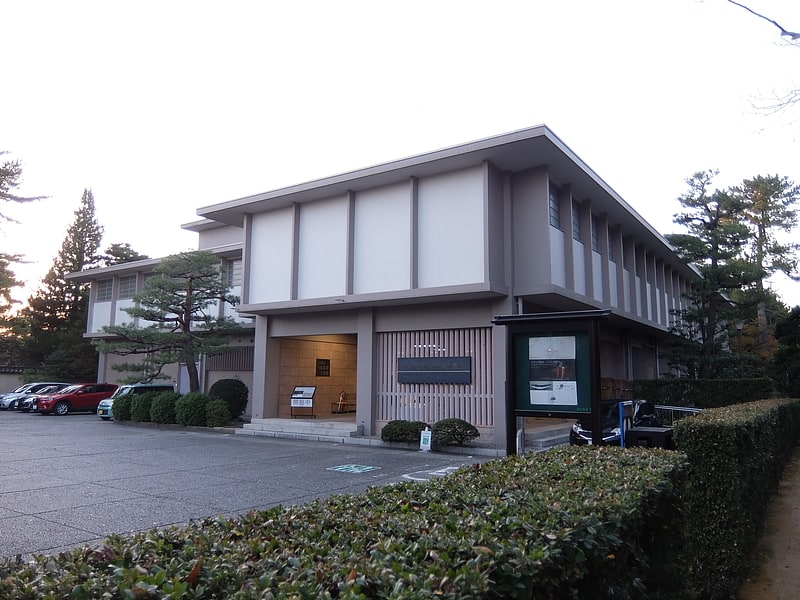
Also known as: 石川県立伝統産業工芸館
Museum in Kanazawa, Japan. The Ishikawa Prefectural Museum of Traditional Arts and Crafts is a museum about traditional arts and crafts located in Kenroku-en, Kanazawa, Ishikawa Prefecture, Japan.[6]
Address: 1-1 Kenroku-machi, 920-0936 Kanazawa
Ishikawa Prefectural Museum of Art
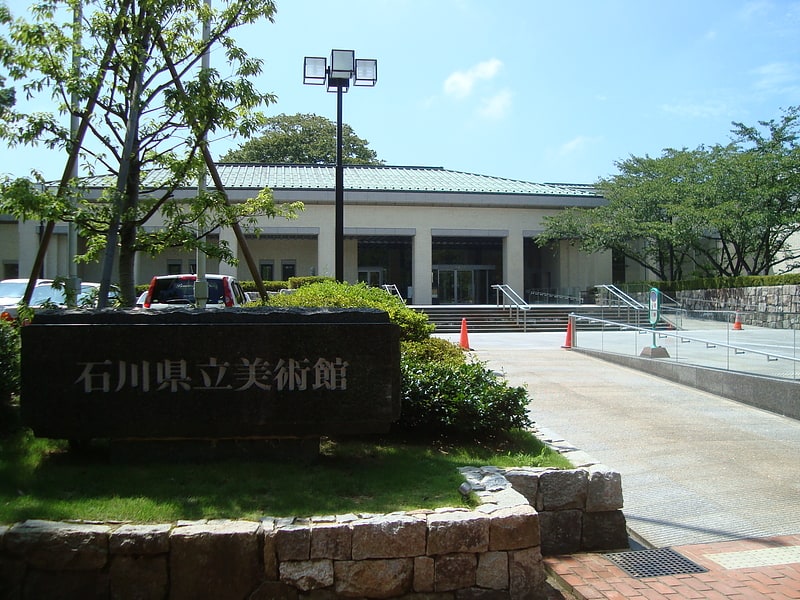
Also known as: 石川県立美術館
Sleek museum with cultural art and relics. Ishikawa Prefectural Museum of Art, also known as IPMA, is the main art gallery of Ishikawa Prefecture, Japan. It is one of Japan's many museums which are supported by a prefecture.
The collection includes some of the prefecture's most important cultural assets and works by artists with some connection to the region. It is located in Kanazawa, Ishikawa within the grounds of the Kenrokuen Garden.
The gallery was first opened in 1959. When the collection outgrew its original building, a new facility was constructed. The current structure was completed in 1983.
The museum has a large permanent collection; and only part of it is exhibited at any one time. The core collection includes significant works from the Maeda family collection which had been previously housed in at the University of Tokyo.[7]
Address: Kanazawa, 2-1 Dewa-cho
Chikamori Site

The Chikamori Site is an archaeological site with the ruins of a late Jōmon period settlement in what is now the Shinbohon neighbourhood of the city of Kanazawa, Ishikawa in the Hokuriku region of Japan. It was designated a National Historic Site of Japan in 1987.[8]
Myōryū-ji
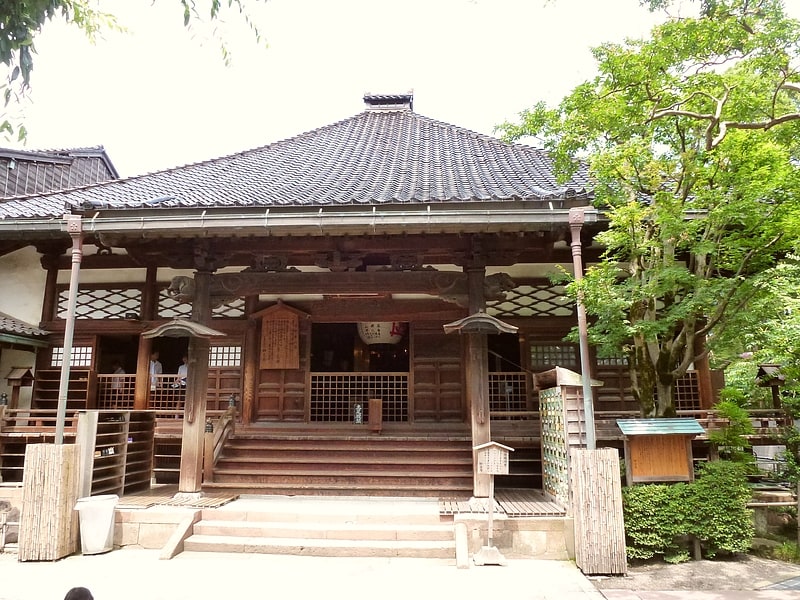
Also known as: 妙立寺
Temple in Kanazawa, Japan. Myōryū-ji, commonly known as Ninja-dera, is a Buddhist temple belonging to Nichiren sect located in the city of Kanazawa, Ishikawa, Japan. While not actually associated with ninjas, the temple earned its nickname because of its many deceptive defences.[9]
Address: 1-2-12 Nomachi, 921-8031 Kanazawa
National Crafts Museum

Museum in Kanazawa, Japan. The National Crafts Museum is a museum of Japanese crafts in Kanazawa, Ishikawa Prefecture, Japan. Still retaining the more formal, official designation National Museum of Modern Art, Tokyo Craft Gallery, it forms part of the Independent Administrative Institution National Museum of Art. As part of the government policy of regional revitalization, the facility relocated in 2020 from Kitanomaru Park in Tokyo, where it first opened in 1977. It is now housed in two Western-style buildings of the Meiji period that have themselves been relocated from elsewhere in Kanazawa, reassembled, and restored, the 1898 Old 9th Division Command Headquarters and 1909 Old Army Generals Club. From the collection of some 3,800 items, by craftsmen from all over Japan, some 1,900 have been transferred, including approximately 1,400 by "holders" and preservers of Important Intangible Cultural Properties, who are often referred to as "Living National Treasures", and members of the Japan Art Academy.[10]
Muro Saisei Kinenkan Museum
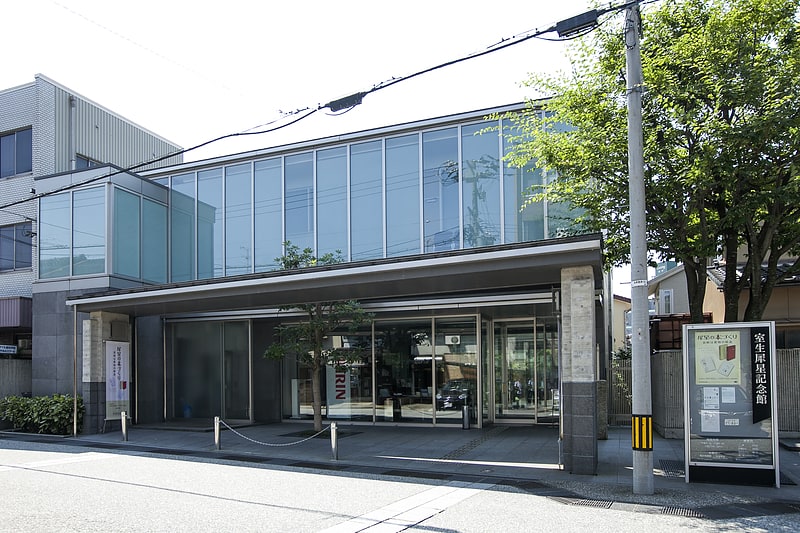
Also known as: 室生犀星記念館
Museum in Kanazawa, Japan. The Muro Saisei Kinenkan Museum is a museum in Kanazawa, Ishikawa Prefecture, Japan. The museum is about the Japanese poet Murō Saisei.[11]
Address: 3-22 Sennichimachi, 921-8023 Kanazawa
Tatsumi Canal
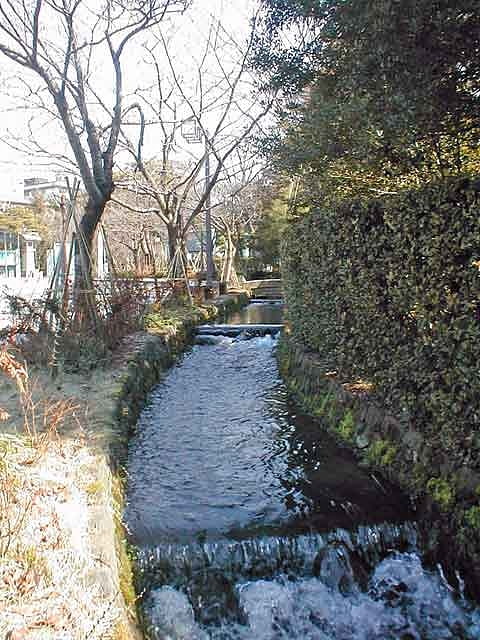
The Tatsumi Canal is an 11 kilometer long canal built in the Edo period in the city of Kanazawa, Ishikawa Japan. A 8.7 kilometer portion of this canal was designated a National Historic Site of Japan in 2010.[12]
Toyokuni Shrine
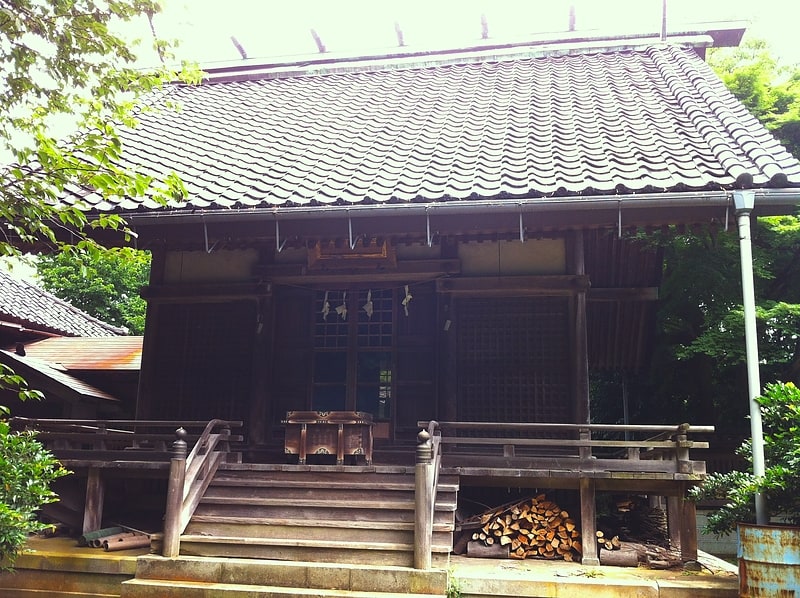
Also known as: 豊国神社
Shinto shrine in Kanazawa, Japan. Toyokuni Shrine is a Shinto shrine located on Mount Utatsu in Higashi-Mikage-machi, Kanazawa, Ishikawa Prefecture, Japan. Under the shrine ranking system, it was listed as a village shrine. Its annual festival day is May 2.
The shrine is dedicated to both Toyotomi Hideyoshi and Maeda Toshitsune, the founder of Kaga Domain. It is located near two other shrines, Utatsu Shrine (a Tenman-gū) and Atago Shrine, and together they are known as the "Mount Utatsu Three Shrines".[13]
Ishikawa Prefectural History Museum

Also known as: 石川県立歴史博物館
Museum in Kanazawa, Japan. Ishikawa Prefectural History Museum is a prefectural museum in Kanazawa, Japan, dedicated to the history and culture of Ishikawa Prefecture. The three ICP red brick buildings date to 1909-14 and functioned first as the local arsenal, then after the Pacific War as the Kanazawa College of Art, before being converted into a museum in 1986.[14]
Address: Kanazawa, 3-1 Dewa-machi
Mount Utatsu

Also known as: 卯辰山
Mountain in Japan. Mount Utatsu is a mountain in Kanazawa, Ishikawa Prefecture, Japan. It is also known by a number of other names, including Mount Mukai, Mount Mukō, Mount Garyū, and Mount Kasuga. It is visible to the east of Kanazawa Castle and has Toyokuni Shrine located on its slopes.
The summit of Mount Utatsu is used as a secondary triangulation point (named "Kanazawa") by the Geographical Survey Institute of Japan.[15]